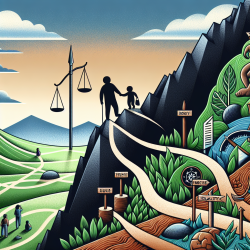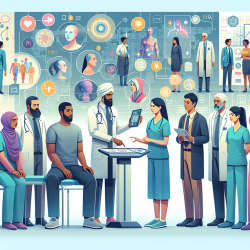Unveiling the Unseen: The Power of Remote Sensing in Understanding Perinatal Outcomes Post-Hurricane Michael
As a speech-language pathologist dedicated to improving children's outcomes, you understand the importance of data-driven decisions. A recent study titled "Remotely sensed measures of Hurricane Michael damage and adverse perinatal outcomes and access to prenatal care services in the Florida panhandle" provides valuable insights into how natural disasters can affect perinatal health and access to prenatal care (PNC). This research could be pivotal in shaping your practice and encouraging further exploration in this field.
Study Overview: The Impact of Hurricane Michael
The study utilized high-resolution aerial imagery to assess residential building damage in the Florida Panhandle following Hurricane Michael. By aligning maternal geocoded address data with this imagery, researchers could evaluate the associations between residential damage and adverse perinatal outcomes, including access to PNC services. The findings revealed that women with lower education and/or of Black or other non-White race/ethnicity were more likely to live in high-damage areas, highlighting significant disparities in disaster impact.
Key Findings and Implications
- Women living in high-damage areas were more likely to experience intermediate or inadequate PNC, with an adjusted risk ratio of 1.21 (95% CI: 1.03, 1.43).
- There was a notable decrease in births in high-damage areas post-Hurricane Michael, suggesting potential migration or delayed pregnancies.
- No significant associations were found between residential damage and other adverse perinatal outcomes, such as low birth weight or preterm birth, indicating the complexity of disaster impacts.
Applying Research to Practice
For practitioners, these findings emphasize the need to consider environmental and social factors when addressing perinatal health. Here are some ways you can integrate this knowledge into your practice:
- Advocate for Equitable Access: Ensure that all families, especially those in high-risk areas, have access to adequate PNC and support services.
- Collaborate with Other Professionals: Work with public health officials and disaster response teams to address the broader impacts of natural disasters on community health.
- Encourage Further Research: Support studies that explore the long-term effects of disasters on perinatal health and the effectiveness of interventions.
Encouraging Further Research
The study concludes that while aerial imagery provides valuable insights into disaster impacts, further research is needed to explore the full spectrum of natural disasters' effects on perinatal health. Future studies should consider additional factors such as household income, insurance coverage, and environmental exposures like mold growth.
To read the original research paper, please follow this link: Remotely sensed measures of Hurricane Michael damage and adverse perinatal outcomes and access to prenatal care services in the Florida panhandle.










